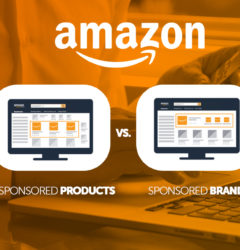Elevate Your Shopify Store with Effective SEO Strategies
In today’s competitive eCommerce landscape, having a well-optimized Shopify store is crucial for standing out and attracting customers. Search Engine Optimization (SEO) on Shopify is your key to increasing your store’s visibility, driving more traffic, and ultimately boosting sales. This guide will explore practical and effective strategies to help you leverage SEO for your Shopify store, ensuring long-term growth and success.
Why SEO Matters
Search Engine Optimization (SEO) is crucial for any online store. It’s not just about getting more visitors but attracting the right kind of visitors—those who are interested in what you’re selling. By optimizing your Shopify store, you ensure that your products and pages are easily discoverable by search engines, leading to:
- Higher search rankings: Appear on the first page of search results, making it more likely for potential customers to find you.
- Increased traffic: More visibility leads to more visitors, which can translate into higher sales.
- Cost-effective marketing: Unlike paid ads, SEO focuses on organic traffic, which is free and sustainable in the long run.
The Benefits of SEO on Shopify
Investing in SEO for your Shopify store offers numerous advantages:
- Long-term growth: SEO is a long-term strategy that builds over time. The efforts you put in today will benefit your store for years to come.
- Better user experience: Good SEO practices improve the overall user experience on your site, making it easier for customers to navigate and find what they need.
- Brand credibility: High search rankings instill trust in users. When your store appears at the top of search results, it signals to potential customers that you are a credible and reliable business.
- Competitive edge: Effective SEO can set you apart from others who might not be investing as heavily in their SEO efforts.
By focusing on SEO, you create a strong foundation for your Shopify store, ensuring that it not only attracts visitors but also converts them into loyal customers. Ready to dive in? Let’s explore the essential SEO features that Shopify offers and how you can leverage them to your advantage.
Why Should You Invest in SEO for Shopify?
Investing in SEO for your Shopify store is not just a good idea—it’s essential. Here’s why:
Increase Visibility
SEO helps your store appear higher in search engine results, making it more likely for potential customers to find you. This increased visibility can lead to:
- Higher traffic: More people visiting your site means more opportunities for sales.
- Brand awareness: Being visible in search results helps build your brand presence and recognition.
- Targeted visitors: Attracting visitors who are actively searching for products like yours increases the chances of conversions.
Drive Free Traffic
Unlike paid ads, organic traffic is free and sustainable. Here’s how SEO drives cost-effective traffic:
- Sustainable growth: Once you rank well, you can enjoy consistent traffic without ongoing costs. This is a huge advantage over pay-per-click advertising, where traffic stops as soon as you stop paying.
- Cost savings: Reducing your reliance on paid ads can save your business significant marketing costs. Invest those savings back into other areas of your business.
- Higher ROI: Organic traffic typically has a higher return on investment because it targets users who are already interested in your products.
By investing in SEO, you’re building a steady stream of potential customers who find your store through organic search. This not only boosts your sales but also strengthens your overall marketing strategy. Ready to take the next step? Let’s look at how Shopify’s SEO features can help you achieve these goals.
Shopify’s SEO Features
Shopify is designed with SEO in mind, offering a range of built-in tools and capabilities to help you optimize your site effectively:
- Customizable title tags and meta descriptions: These allow you to include relevant keywords, improving your chances of ranking higher in search results. Crafting compelling and keyword-rich titles and descriptions can significantly enhance your click-through rates.
- SEO-friendly themes: Shopify themes are designed to be responsive and fast, which are crucial factors for SEO. A responsive design ensures your site looks great on all devices, while fast loading times improve user experience and search engine rankings.
- Built-in blogging platform: Blogging is a powerful SEO tool, and Shopify’s integrated blog makes it easy to create content that attracts visitors. Regularly publishing high-quality blog posts can help you target additional keywords, engage your audience, and establish your store as an authority in your niche.
These features provide a solid foundation for building a high-ranking online store.
How to Improve SEO for Your Shopify Pages
Improving SEO on Shopify involves several key strategies. Here are some essential tips, integrated with examples to illustrate each point:
Keyword Research
Start with thorough keyword research to understand what your audience is searching for. Use tools to find relevant keywords and focus on long-tail keywords that are less competitive but highly relevant to your products. For example, if you sell handmade candles, your keywords might include “handmade candles,” “scented candles,” and “organic candles.”
Steps to Conduct Effective Keyword Research:
- Identify Seed Keywords: Begin with basic terms related to your products.
- Use Keyword Tools: Tools can help you find related keywords and see how often they’re searched. For instance, you might discover that “soy wax candles” and “aromatherapy candles” are popular searches.
- Analyze Competitors: Look at the keywords your competitors are ranking for. This can provide insights into what terms might work well for you.
Content Optimization
Use your keywords naturally in your product titles, descriptions, and blog posts. Avoid keyword stuffing, as it can hurt your rankings. Instead, aim for a natural flow that provides valuable information to your visitors. For example, instead of just “Lavender Candle,” use “Handmade Lavender Candle with Organic Soy Wax.”
Content Optimization Tips:
- Product Titles: Ensure your product titles are clear and include your main keyword.
- Product Descriptions: Write detailed product descriptions that include relevant keywords. Describe the benefits and features of your products. For example, “Our handmade lavender candles are crafted with organic soy wax, providing a clean and calming scent perfect for relaxation.”
- Blog Posts: Regularly update your blog with posts that incorporate your keywords. For example, write a blog post about “The Benefits of Using Organic Soy Wax Candles” and naturally include your keywords throughout the article.
Mobile Optimization
Ensure your site is mobile-friendly. Google prioritizes mobile-friendly sites, and many users shop from their phones. A responsive design that adjusts seamlessly to different screen sizes is crucial for both user experience and SEO.
Mobile Optimization Tips:
- Responsive Design: Use a responsive theme that adjusts to various screen sizes. Shopify offers many mobile-friendly themes.
- Simplified Navigation: Ensure your navigation menu is easy to use on mobile devices. For example, use a drop-down menu or a hamburger menu to save space.
- Fast Loading Times: Mobile users expect fast load times. Optimize images and use efficient coding practices to ensure your site loads quickly on mobile devices.
Page Speed
Optimize your site’s load time. Compress images, use a fast hosting provider, and limit the use of heavy scripts. Faster page load times lead to better user experience and higher search engine rankings.
Page Speed Improvement Tips:
- Compress Images: Use tools to reduce the file size of your images without sacrificing quality. For example, use image compression tools to reduce the size of your product photos.
- Efficient Hosting: Choose a reliable hosting provider known for speed. This ensures your site can handle traffic efficiently.
- Minimize Scripts: Limit the use of heavy JavaScript and other scripts that can slow down your site. For instance, avoid unnecessary animations or effects that might increase load times.
Internal Linking
Create a strong internal linking structure to help search engines understand the hierarchy and importance of your pages. This also helps visitors navigate your site more easily.
Internal Linking Tips:
- Link to Related Products: In your product descriptions, link to related products. For example, on a page for lavender candles, you might link to other scented candles or candle accessories.
- Use Breadcrumbs: Implement breadcrumb navigation to help users understand their location within your site. This can improve both user experience and SEO.
- Blog to Product Links: In your blog posts, link to relevant product pages. For instance, in a blog post about the benefits of aromatherapy, link to your aromatherapy candle products.
Shopify SEO Tips
Avoid Duplicate Content
Duplicate content can harm your SEO. Make sure each page has unique content to avoid penalties from search engines.
How to Avoid Duplicate Content:
- Regular Audits: Regularly audit your site for duplicate content. For example, if you have multiple pages for similar products, ensure that each description is unique. Use tools to scan your site for duplicate content issues and address them promptly.
- Canonical Tags: Use canonical tags to indicate the preferred version of a page. This helps search engines understand which version of the page to index. For instance, if you have a product listed in multiple categories, set a canonical URL to the primary category page to avoid duplication.
- Unique Descriptions: Create unique descriptions for each product. Avoid copying and pasting manufacturer descriptions or using the same text for similar products. Highlight unique features, benefits, and uses for each product to differentiate them.
Choose Relevant Keywords
Selecting the right keywords is essential for attracting the right audience to your store.
Steps to Choose Effective Keywords:
- Conduct Thorough Research: Use tools to research relevant keywords. For example, if you sell organic skincare products, search for terms like “natural face cream,” “organic moisturizer,” or “eco-friendly skincare.”
- Analyze Competitors: Look at the keywords your competitors are using. This can give you insights into what might work well for your products.
- Incorporate Naturally: Integrate keywords naturally into your product titles, descriptions, and blog posts. For instance, in a product description for an organic moisturizer, include phrases like “best organic face cream” or “natural skincare solution.” Ensure the content flows naturally and provides value to the reader.
- Long-Tail Keywords: Focus on long-tail keywords that are more specific and less competitive. These keywords often attract more qualified traffic. For example, “organic moisturizer for sensitive skin” is a more targeted keyword than just “moisturizer.”
Optimize Your Metadata
Well-optimized meta titles and descriptions can significantly improve your click-through rates.
Metadata Optimization Tips:
- Compelling Meta Descriptions: Write compelling meta descriptions that encourage clicks. For example, a meta description for a handmade soap might read, “Discover our handmade soaps made with natural ingredients, perfect for sensitive skin. Enjoy a luxurious and gentle cleanse with every use.”
- Unique Metadata: Ensure each page has unique and accurate metadata reflecting its content. This helps search engines and users understand the page’s relevance. Avoid using the same meta titles and descriptions across multiple pages.
- Include Keywords: Incorporate relevant keywords naturally into your meta titles and descriptions. For example, “Buy Handmade Lavender Soap – Natural Ingredients – Perfect for Sensitive Skin.”
Improve Page Load Times
Page speed is a critical factor for both user experience and SEO.
Ways to Speed Up Your Pages:
- Compress Images: Optimize and compress images to reduce file size without sacrificing quality. For instance, use tools to compress product photos for faster loading times.
- Efficient Hosting: Use efficient hosting solutions that ensure fast load times. A reliable host can significantly enhance your site’s performance.
- Minimize Scripts: Limit the use of heavy scripts. Avoid unnecessary animations or effects that might slow down your site. This ensures a smoother experience for users. Remove or defer non-essential scripts to improve load times.
- Browser Caching: Enable browser caching to speed up page load times for returning visitors. This stores some elements of your site on the user’s device, reducing the amount of data that needs to be downloaded on subsequent visits.
Enhance User Experience
A seamless user experience keeps visitors on your site longer, reducing bounce rates and boosting SEO.
User Experience Best Practices:
- Simplified Navigation: Simplify site navigation for ease of use. For example, use clear and concise menu labels and ensure important pages are easily accessible. A well-organized menu and intuitive site structure help users find what they’re looking for quickly.
- Engaging Content: Ensure your content is engaging and easy to read. Use headings, bullet points, and images to break up text and make information more digestible. For example, product descriptions should be detailed yet easy to scan, highlighting key features and benefits.
- Responsive Design: Ensure your site is mobile-friendly. A responsive design adapts to different screen sizes, providing a consistent and user-friendly experience on all devices.
Utilize Your Blog
Regularly updating your blog with valuable content can keep your audience engaged and improve your SEO.
Blogging Tips:
- Answer Common Questions: Write posts that answer common questions and provide useful tips. For example, a blog post titled “How to Choose the Best Organic Skincare Products” can attract readers interested in natural beauty solutions. Addressing frequently asked questions helps build trust and authority.
- Share Relevant Information: Share relevant and timely information related to your industry. This positions your brand as an authority and keeps your audience informed. For instance, write about the latest trends in organic skincare or provide tutorials on how to use your products effectively.
- Keyword Integration: Naturally integrate keywords into your blog posts. For example, if your post is about “The Benefits of Organic Skincare,” include related keywords throughout the content in a way that flows naturally.
Continuously Monitor and Adjust Your SEO Strategy
Regularly reviewing your SEO performance helps you identify areas for improvement and keep your strategy effective.
Monitoring Tips:
- Track Rankings and Traffic: Monitor your search rankings and site traffic to understand how well your SEO efforts are working. For example, use analytics tools to see which keywords are driving the most traffic. Track changes over time to identify trends and areas for improvement.
- Adjust Strategies: Adjust your strategies based on performance data. If certain keywords are underperforming, consider revising your content to better target those terms or exploring new keywords. Stay flexible and adapt to changes in search engine algorithms and user behavior.
- A/B Testing: Conduct A/B testing on various elements of your site, such as meta descriptions, titles, and content, to see what works best for your audience. Use the results to make data-driven decisions and improve your overall SEO strategy.
Conclusion
SEO on Shopify is a powerful tool for growing your eCommerce business. By implementing the strategies and tips outlined in this guide, you can boost your store’s visibility, drive more traffic, and increase sales. Start optimizing today and watch your Shopify store thrive. Remember, SEO is an ongoing process, so stay updated with the latest trends and continuously refine your strategy to stay ahead of the competition.






